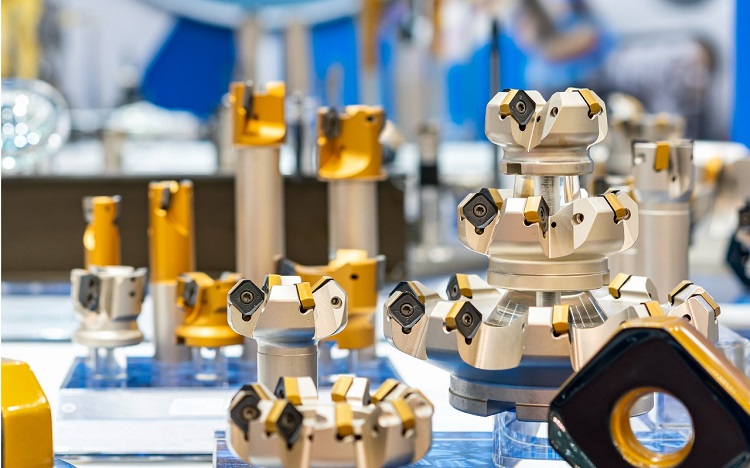Thursday, 29 September 2022
In Telecom, There’s a New Kid on the Block
Wednesday, 28 September 2022
Empowering Partners to Sustainably, More Securely Retire Technology
Tuesday, 27 September 2022
Rising to the Challenge of a Green Data Center
Conquering Overburdened Grids and Rising Energy Costs
A Robust Strategy, with the Right Partner, is the Best Way to Tackle the Problem
Creating a Green Data Center Is Not a “One Size Fits All” Equation
Putting It Together with the Right View
Sunday, 25 September 2022
Transforming 3D Graphics Production with Dell and NVIDIA Omniverse
Solutions for Remote, Collaborative and Secure 3D Graphics Creation
3D Design Collaboration in Different Industries
Customer Example: ebb3
Enabling Remote 3D Design to Build the Metaverse
Saturday, 24 September 2022
Meeting Modern Application Needs with Data Processing Units
Thursday, 22 September 2022
Data Placement and Management Strategies with Microsoft Hybrid Cloud
Data Placement and Management is Integral to any Cloud Strategy
Tuesday, 20 September 2022
Computing on the Edge – NEBS Overview
NEBS™, or the Network Equipment-Build System, was initially developed by Bell Labs in the 1970s, for North American markets, with the intent of creating a common set of performance and safety specifications for their equipment vendors. Today, these specs have been widely adopted throughout the telecom industry and drive the designs of telecom-focused equipment.
Not legal requirements, these are North American industry adopted specifications that are, in many cases, required by telecom customers as a minimum threshold for deployment into their critical communications networks. NEBS specifications are often the foundation of equipment Request for Proposals (RFPs) that telecoms issue at the start of their procurement cycles. Poor performance in these NEBS sections, regardless of the quoted price, will often disqualify an equipment vendor from further participation in a particular opportunity.
Telcordia (previously Bellcore) was the historic creator and maintainer of the NEBS Specifications. Ericsson purchased Telcordia in 2012 and now manages the NEBS documentation tree. Continued development of the specifications is jointly conducted by Ericsson’s Telcordia-NIS (Network Infrastructure Solutions) division, TSPs (Telecommunications Service Providers), Equipment Manufacturers and Testing Organizations.
For NEBS Certification, there are three primary GRs (Generic Requirements) specifications, which are:
1. GR-63-Core, Physical Protection. At a high-level covers temperature/humidity operational/storage ranges, fire resistance and spread and vibration/earthquake survivability.
2. GR-1089-Core, Electromagnetic Compatibility (EMC) and Electrical Safety. Primarily covers safety and immunity concerns involving electrostatic discharge (ESD), EMC and requirements for power and grounding.
3. GR-3108-Core is of interest, as this contains requirements for the deployment of electronic equipment in outdoor environments.
 |
| Figure 1 – Dell MDC415 OSP |
Tying all these together is a Special Report, SR-3580, which defines the scope of the NEBS Levels. These NEBS Levels range from one to three, increasing levels of tolerance and testing requirements for each level, with Level 3 being the most demanding. For our purpose in Telecom, NEBS Level 3 is the typical requirement. Perhaps over-blunt, but NEBS Level 1 and 2 gives assurance that the vendors’ electronic equipment will not burn down a facility or be a human hazard. NEBS Level 3 is the “minimum” level of environmental tolerance that is acceptable to deploy equipment into a telecom provider’s network.
Additionally, some Cellular Service Providers (CSPs) have their own “hybrid” NEBS requirements which can either exclude certain tests or expand the range of NEBS testing beyond their defined values. So, it’s important to understand your target customer’s requirements when creating NEBS-compliant products, and what your customer will demand to gain acceptance for installation into their network.
For instance, NEBS is used as an equipment foundation for AT&T, such as found at AT&T’s NEBS Site, and adds to it additional specifications to deploy into AT&T’s network. Other large telecom providers may have similar expanded specifications.
NEBS Certifications are performed by third party testing labs and are achieved at considerable planning, time and cost. These labs subject the equipment under test to the range of environments specified in GR-63-Core and GR-1089-Core, for the NEBS Level of testing that is being requested. At the end of this process, a sizeable compliance test report is generated with the detailed test result and, if passed, a Certificate of Conformance that can be provided as proof to a customer that NEBS Testing was performed, completed, and passed.
Other standards bodies, such as the European Telecommunication Standards Institute (ETSI) and American National Standards Institute (ANSI), have documented standards similar to NEBS. Compliance with ETSI is a requirement for most of the EU countries, but the test specifications for ETSI are generally lower than NEBS, so achieving NEBS certification will also cover ETSI requirements.
In the future, we’ll further explore each of the specification documents, highlighting the major testing criteria.
Source: dell.com
Thursday, 15 September 2022
Manufacturing Insights for Next-Level Productivity and Sustainability
Opportunities Abound
What to Do
Manufacturing Outcomes
Tuesday, 13 September 2022
Boost Your Workload Performance with NVMe/TCP
Benefits of NVMe/TCP Technology
What Were the Challenges of Adopting NVMe/TCP Technology?
Dell Technologies One-Two Punch to Simplify Adoption
Leading Linux-based Discovery Client Innovations
What’s New for the August 2022 Release?
Monday, 12 September 2022
Enabling Indian Small Businesses with the Right Technology Infrastructure
Sunday, 11 September 2022
Multicloud on Your Terms with VxRail
Redefining the Infrastructure of the Future
The Next Evolution of vSAN and vSphere on VxRail
Ultimate Compute and Storage Flexibility
Thrive at the Edge with VxRail
Bringing These Innovations to Market
Saturday, 10 September 2022
Computing on the Edge: Design for NEBS
 |
| Figure 1 – Site Support Cabinet |
 |
| Figure 2 – Dell’s XR11 NEBS Compliant Edge Server |



















